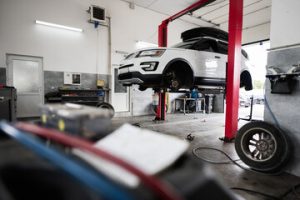Depending on the severity of the accident, the shop may need to remove parts such as doors or fenders. They will then start working on the metal components of your car using an electronic measuring system to ensure they are up to factory standards and that your vehicle has structural integrity. Clicking here at https://www.juanitosautobody.com/ will tell you more.

Inspection
Before any work begins, an auto body shop will inspect your vehicle from top to bottom. This process will include taking clear photographs of the damage to create a visual record that can be used for insurance claims, communication with technicians and more. These photos will help prevent miscommunication and misunderstandings that can lead to delays in the repair process.
Next, the auto body shop will disassemble your vehicle to assess any hidden damage that may not have been visible in the initial inspection. This is also known as “damage mapping,” and it is a vital step in ensuring that every aspect of the repair job is accounted for. Depending on the extent of the disassembly, this step can take anywhere from a few hours to a few days.
Once the disassembly is complete, the auto body shop will use a computerized measuring system to restore the frame and other metal components to their original specifications. This is an important step because it ensures that your car is safe and structurally sound after repairs are completed.
The last step in the inspection process is for the technician to re-test all of the functional safety features of your vehicle. This includes ensuring that the airbags and seatbelts are properly functioning and that the doors, hood, and trunk close correctly. It is also a good idea to check the fluid levels, including oil and coolant, as well as checking that the tires are properly inflated and balanced.
Repairs
After a thorough inspection, the repair shop will create a repair estimate. This will be based on both a visual inspection and the use of diagnostic tools to uncover hidden damage. This may take up to a day.
If your car is being repaired through insurance, the adjuster will review and approve the estimate before repairs begin. This may include scheduling an insurance re-inspection and procuring additional parts.
Once the repair estimates are approved, technicians will begin working on your vehicle. Minor repairs, such as fixing dents and scratches or restoring your bumper, are the fastest to complete. They can typically be completed within a few hours to a couple of days.
More extensive repairs, such as frame straightening and structural damage, require a much more in-depth approach. This is because there are multiple layers of materials in modern vehicles. Auto body specialists use specialized tools, such as frame machines and laser diagnostic equipment, to achieve precise shaping and symmetry.
To ensure that technicians can access every area of your car, it is important to clean out the interior and trunk before dropping off your vehicle for an estimate. Items such as electronics, loose change, and paperwork can interfere with the assessment process. In addition, it is a good idea to have an alternative way of getting around while your vehicle is in the shop.
Disassembly
After the initial assessment, the body shop will disassemble the vehicle to inspect the full extent of damage. They will take pictures, use diagnostic tools to determine what parts need repairs or replacement, and create a detailed repair estimate for you. They may also work directly with your insurance provider to help make the process more streamlined.
Depending on the severity of the collision, structural repairs may be required to restore the vehicle’s original shape. This is a major part of auto body repair, and it can take several days or even weeks to complete. Skilled technicians will reshape the damaged frame or unibody structure using laser frame diagnostic equipment and precision machinery to ensure the correct alignment.
Once the structural repairs are completed, the body shop will reassemble your car and prepare it for painting. This includes sanding, priming, and painting the repaired areas to match the original color and finish of your vehicle. The paint is then clear-coated for a smooth, shiny finish.
Once the paint dries, the body shop will reinstall any removed parts and perform a final inspection. They will clean both the interior and exterior of your vehicle, and they will go over the repairs with you to answer any questions or concerns you have. Then, your repaired vehicle will be ready to return to you!
Painting
Whether your car has been involved in a minor or major collision, it’s likely that the shop will be required to repaint the vehicle after repairs are completed. This is a critical step in the repair process and can help ensure a sleek and polished appearance. There are a number of factors that contribute to the quality of an auto body paint job. The first is meticulous preparation. This involves cleaning the surface and removing any old coatings or paint. Then the technician masks off areas such as the lights, mirrors, and windshield wipers to protect them from overspray.
Next comes priming. This helps to ensure that the top coat will adhere properly and prevent rust and corrosion in the damaged area. A good primer also smooths out the imperfections and provides a clean, even canvas for the base coat. Finally, a base coat will be applied, followed by a clear coat to provide a glossy finish and protect the previous layers from chemicals, UV rays, and other environmental influences.
While the painting process can take a few days or multiple weeks depending on the intricacy of the repairs and drying durations, it is an important part of the repair and restoration of your vehicle. When you visit a professional body shop, they will provide you with regular updates and a timeline of the repair and painting processes so you can understand what to expect.